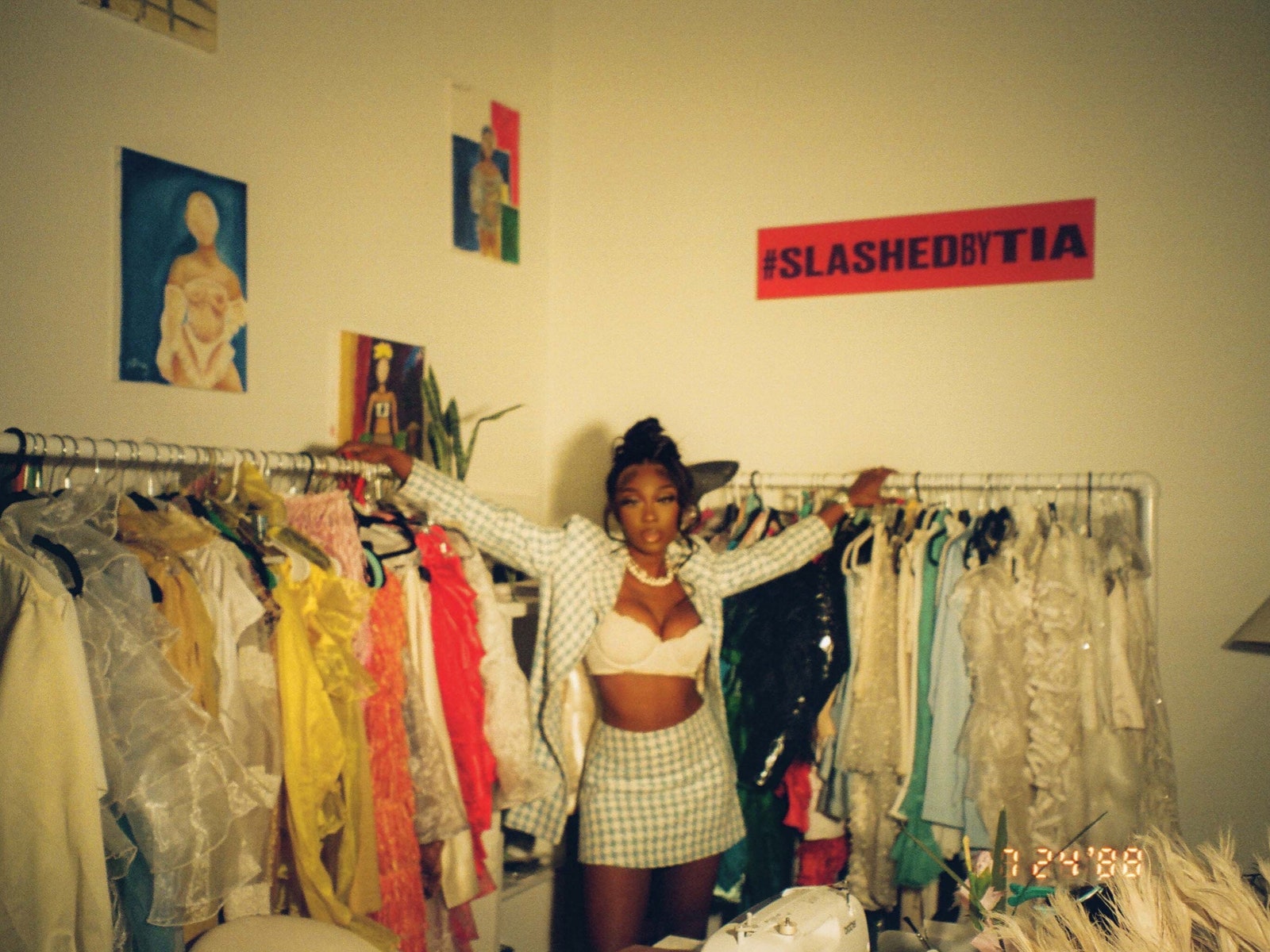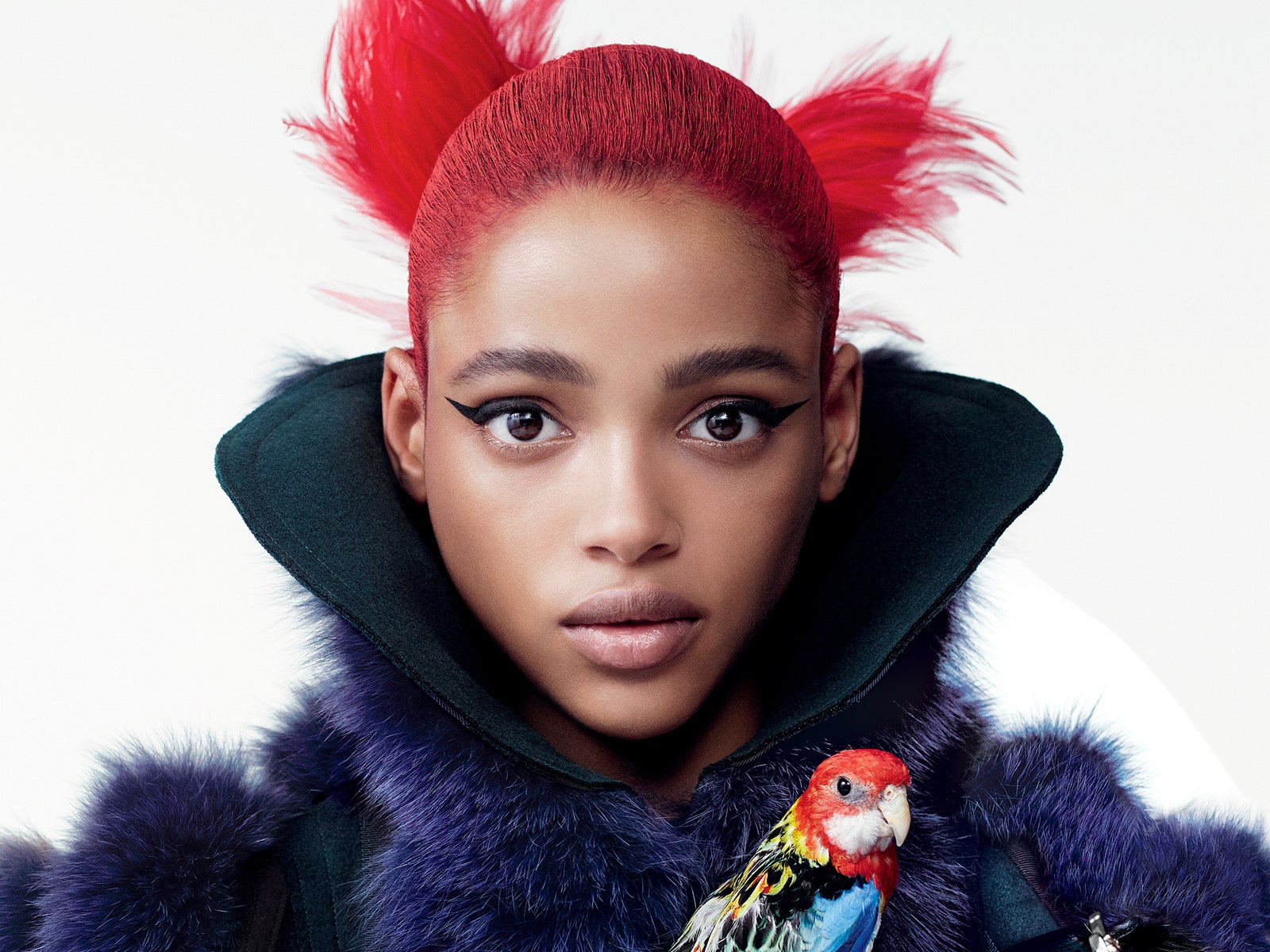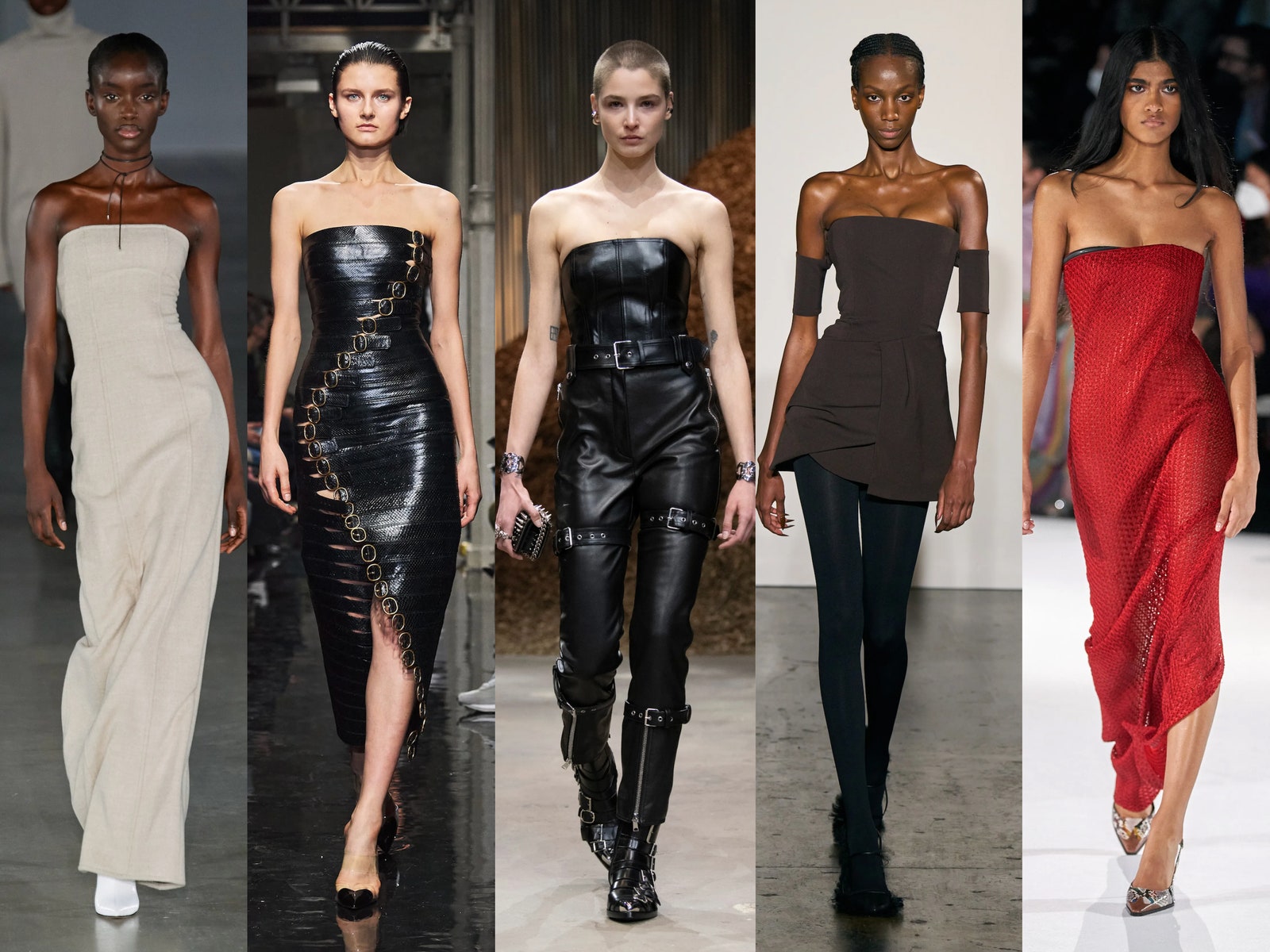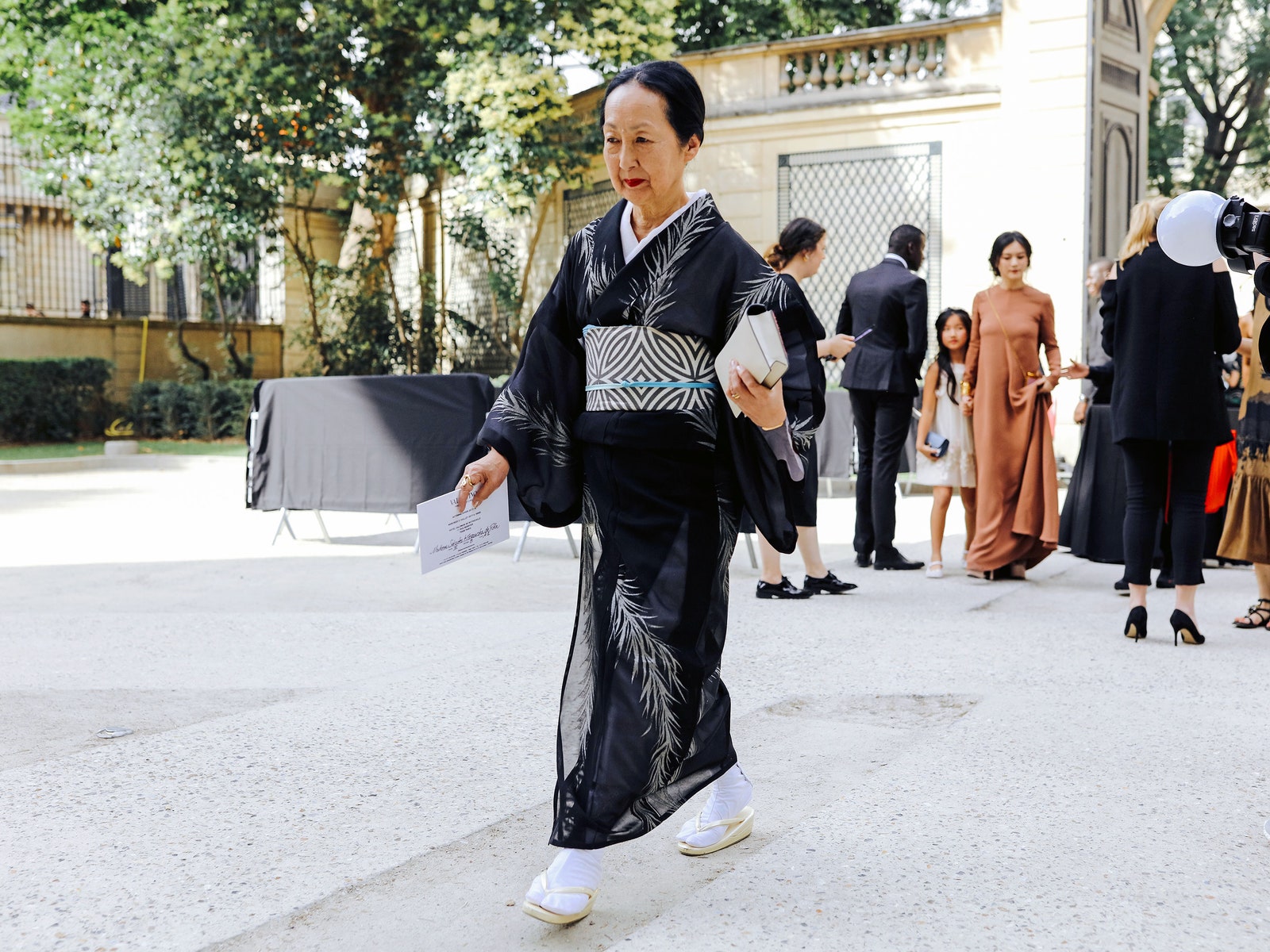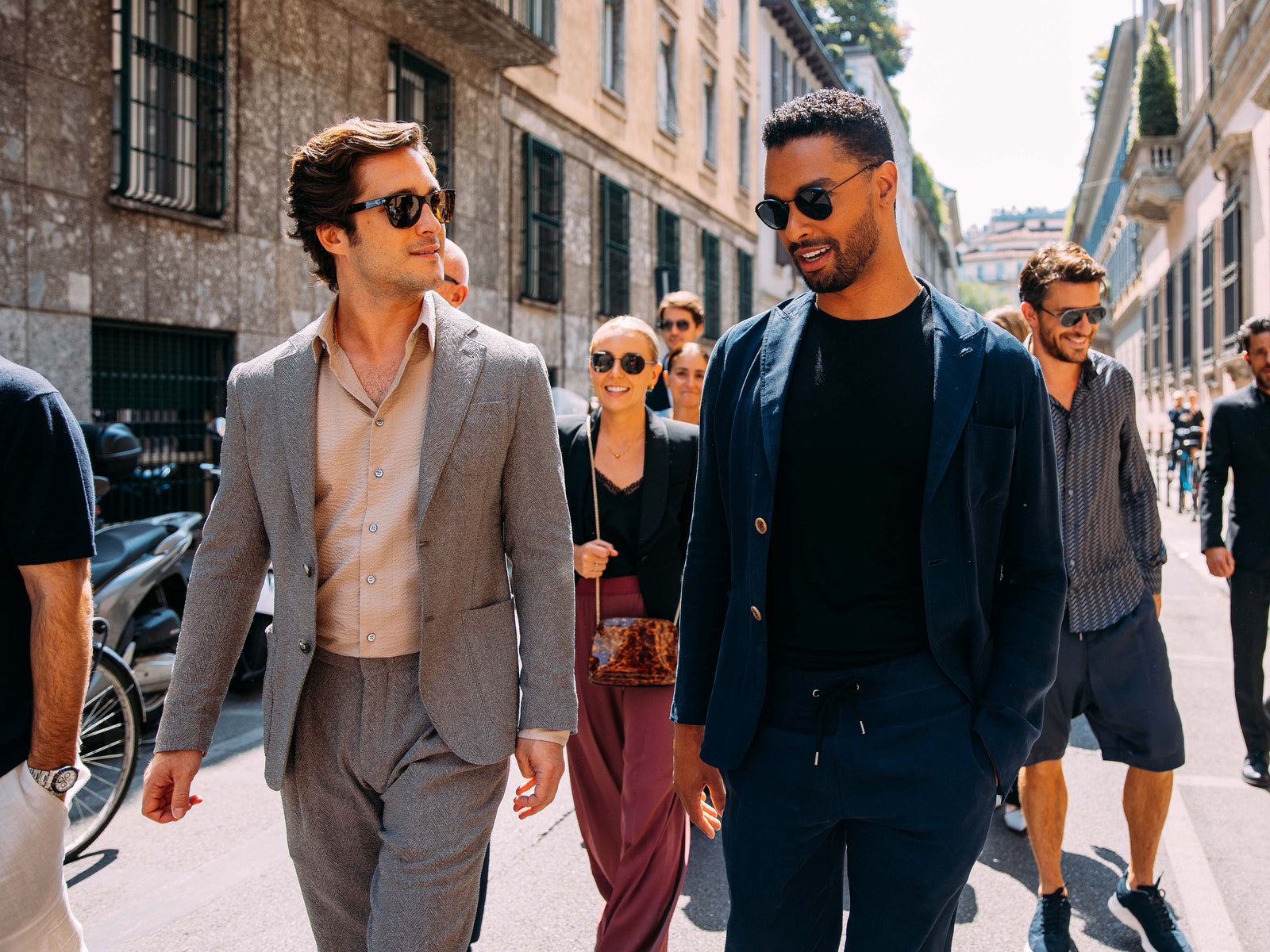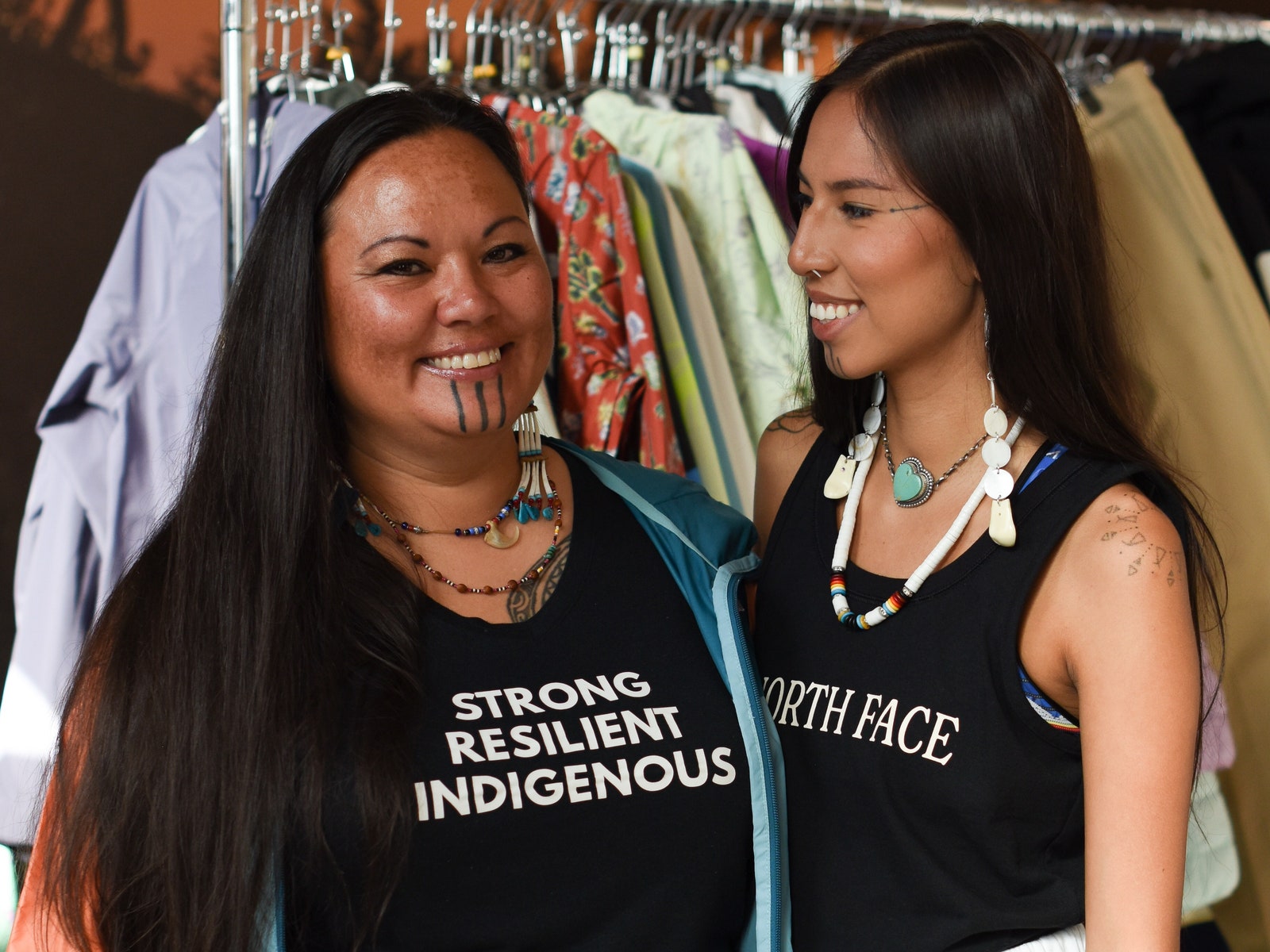
“If you want to know who I am, you have to acknowledge where I come from.” These are the opening words of Walking Two Worlds, a new documentary that premiered at the Tribeca Film Festival last week exploring the meteoric rise of Indigenous model Quannah Chasinghorse. The film, directed by Maia Wikler, follows Chasinghorse and her mother, Jody Potts-Joseph, as they grapple with the two realities they currently exist in. One world they inhabit is the more familiar one—living on their Alaska homelands and engaging in their traditional hunting, fishing, and dogsledding practices. The other world is newer and perhaps more foreign, arriving thanks to Chasinghorse’s newfound status as one of the high-fashion world’s most in-demand new faces, taking over the runways for labels such as Gucci and Chanel and even attending the Met Gala twice.
The documentary was filmed over three years beginning in 2019 and charts the model’s rapid rise to fame. Chasinghorse was first scouted for a Calvin Klein campaign in 2020 and has since been signed by IMG Models. In the film, Chasinghorse admits she was nervous about allowing viewers into her story but excited to showcase all the sides of herself. “I was anxious because I’m very raw and vulnerable in the film,” Chasinghorse tells Vogue. “I show parts of myself that I don’t normally show. But I wanted to show a sense of realness of the Indigenous experience. The doc shines a light on multiple issues within our community and how people really struggle with them. With myself, people will be like, ‘Your life seems fine—why do you care?’ But I’m not fine. These things affect me.”
The film opens with Chasinghorse at an Alaska fish camp back in the winter of 2020, where she’s seen hunting and fishing alongside her mother. “I’m so grateful that my mom taught me how deep and sacred the practice of hunting really is,” the model says in the film. “Take care of the land, and it will take care of you.” The documentary proceeds to touch on the growing climate crisis in Alaska and Chasinghorse’s advocacy work within the region, where she has tirelessly fought to conserve the state’s Arctic National Wildlife Refuge—a vast, 20-million-acre ecosystem that continues to face endangerment due to global warming and fossil-fuel extraction. Later in the film, she also candidly shares her struggles with rising fame and constantly being away from this urgent work. “I’ve been having a lot more anxiety attacks because I’m not home anymore,” Chasinghorse says in the film. “In my spirit, I’ve felt a loss—all I’ve thought about is missing out on hunting and fishing. Everything is under threat, and if I’m not able to go back home within the next few years, those things might be gone.”
In addition to highlighting her connection to her cultural roots and community back in Alaska, the documentary also sheds light on how Chasinghorse has navigated being thrust into the fashion world at such a young age, working between New York and Los Angeles. Growing up, she shares that she always wanted to model but at times didn’t feel beautiful due to her Indigenous features. “I hated my nose, I hated my bone structure—I wanted to look like every other white girl because they were loved and desired by everybody,” Chasinghorse says. Since then, the model has proudly embraced her features, and her traditional Hän Gwich’in face tattoos have become a signature element of her look: She’s proudly worn them on the covers of Vogue Mexico and National Geographic and on the runways at Chanel, Prabal Gurung, and Gabriela Hearst.
While Chasinghorse is now providing much-needed representation for Indigenous folks in fashion—even being one of the few invited to the 2021 Met Gala, where she wore a striking Dundas gown, before returning to the event again this May in Prabal Gurung—the model notes there’s still much work left to be done within the industry in terms of diversity and inclusivity. “We need more faces—I shouldn’t be the only Native person when I walk on set,” Chasinghorse says. “Just yesterday when I was on set, there was another Native girl doing my hair and I felt like just having that one person to connect with changed my whole mood. In every aspect and in every space, there needs to be more of us.”
She does add, however, that watching the documentary premiere at the Tribeca Film Festival this past weekend among a full audience allowed her to feel one thing: proud of all her accomplishments thus far. And it’s only the beginning for the rising star. “I’m really hard on myself. I really have to learn to take a step back and be proud of myself,” says Chasinghorse. “After I [watched the film,] I was like, You know what, I am proud of myself. But I’m not even close to being satisfied with myself. There’s so much more that I want to do.”

